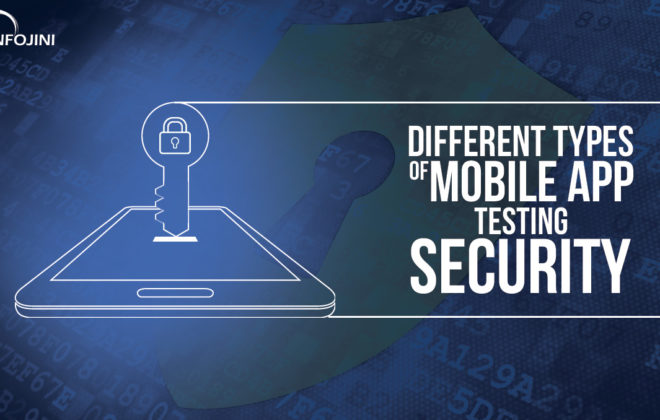How to Create a Robust Upskilling Strategy in 5 Easy Steps?
The Future of Jobs Report: 2018, a report by the World Economic Forum suggests that,
By 2022, at least 54% of all employees in the workforce will need a significant re- and upskilling.
The rapidly rising automation has influenced numerous organizations across different industries. Employees are most fearful of losing their jobs, which makes job security their utmost priority. Businesses also fear that their employees don’t have the much-required skills needed to support their business. This makes it crucial for most organizations to take care of employees’ professional development through upskilling.
For businesses to stay relevant, upskilling is a vital process. A report by Productivity Commission suggests that the most important factor in the surging skill shortages in the workforce is the combination of technological progression and an aging workforce.
To stay competitive, companies need to hire more tech-savvy employees. Additionally, invest in retention and professional training. Many employees lose interest in working for the company they are working for when they feel they have stopped learning. Finding and training new talent is an expensive process. According to research, replacing an employee can cost employers up to 33% of an employee’s salary.
Upskilling is an excellent tool that encourages employee retention and engagement. It not only benefits your organizational goals but also the well-being of your workforce.
Upskilling is good for business, too, in many ways. According to a Capgemini Research Institute report, individual who benefits from upskilling can better leverage automation technology through tools but more importantly can also move to more value-added activities, generating more output for the organization.
Why Upskilling Is Important Across All Industries
● Improves Employability
Upskilling is an excellent way to acquire job stability. It not only reinforces your position in a company but also improves further prospects of future employability. As technology evolves, the aging workforce must upskill and reskill to make themselves future proof.
● Ensures Flexibility and Agility
When the workforce upskills to learn trending skills and technologies, they become flexible and agile. They can quickly adapt to changing market demands.
● Promotes Collaboration
Learning new skills enables you to partner with people who have similar thought processes. Collaborations can help people advance their networking and head projects.
How You Can Upskill Employees
![]()
1. Personalized Training Approach
Personalized training makes employees feel valued. Any program catering to an individual will help them progress at a much faster rate compared to group training. This one to one setting boosts employee’s confidence as they are given more responsibility and attention.
As personal attention makes employees feel valued, therefore retaining them becomes a lot easier. An individualized learning program can only be fruitful by understanding the knowledge gaps and expertise of each and every individual.
2. Arrange Mentorship Programs
Mentorship programs are rapidly increasing in popularity and for a good reason. According to a report by Forbes, about 350 Fortune 500 companies have a mentorship program in place.
![]()
Connecting budding team members with experienced employees will help them grow much needed professional skills. Mentorship programs are most useful when an individual is climbing the corporate ladder and aspires to take a more senior position. Mentees feel encouraged when the mentors guide them into a higher position.
However, mentors with the most knowledge to spare are often busy due to high onus on them. To tackle this problem, a dedicated time should be created for mentees and mentors to connect.
3. Use Simulations and Real-world Case Studies
Real-world case studies and simulation allow people to identify and apply knowledge instantly. This is largely helpful in training employees. For instance, new employees in the customer service department can undergo a role-playing exercise wherein nascent employees get to play the role of customers and understand their mindset more efficiently.
Although simulation is helpful in many areas of professional development, it is useless until an employee doesn’t apply it to their job responsibilities. While training, generic content will not engage learners at all. It will only be relevant if it applies to their job. Case studies should only be selected for training depending on how much it relates to the day to day operation of the employee’s role.
4. Introduce Bite-size or Micro-learning
Employees working in packed schedules and workloads are generally not able to give much time to training. On the other hand, microlearning or bite-size learning, which contains short lessons – roughly about 3 to 5 minutes long – is designed for a much quicker learning approach.
Long training programs usually consist of myriads of information, and employees are expected to pick up everything in a short time. As humans have a limited attention span, bite-sized learning programs are much more practical to remember and implement. It makes long term knowledge retention much easier.
5. Secondary Online Learning Program
A secondary online learning program can provide additional resources to the employees which can be utilized in their free time. These programs can help you create the future leaders you seek by providing them with the required knowledge for their professional growth.
Online learning also helps employees develop soft skills as only job-specific skills can be developed in work hours. They can learn various soft skills ranging from time management, work ethic, to communication skills. Supplemental learning platforms requires placing the employees in relevantly rich situations. These situations are subjectively testing, which enables them to learn new abilities and skills.
Subscribe For Updates
Categories
- Accountant
- AI
- Automation
- Awards and Recognitions
- Blue Collar Staffing
- Burnouts
- Campus Recruiting
- Cloud
- Co-Ops agreements
- Company Culture
- Compliance
- contingent workforce
- Contingent Workforce
- COVID-19
- Cyber Security Staffing
- Data Strategy
- Digital Transformation
- direct sourcing
- Distributed Workforce
- Diversity
- Diversity & Inclusion
- Economy
- Events & Conferences
- fleet industry
- Gig Economy
- Girls in Tech
- Global Talent Research and Staffing
- Government
- Healthcare
- Healthcare Staffing
- Hiring Process
- Hiring Trends
- Home Helathcare
- HR
- HR Practices
- HR Tech
- IT
- Labor Shortages
- Life Science
- Local Governments
- News
- Nursing
- Payroll Staffing
- Public Sectors
- Recruiting
- Remote Work
- Skill Gap
- SMB Hiring
- Snowflake
- Staffing
- Staffing Augmentation
- Staffing Challenges
- Talent ROI
- Tech Staffing
- Technology
- Tips & tricks
- Total Talent Management
- UI/UX Design
- Uncategorized
- Veteran Staffing
- Veterans Hiring
- Veterans Hiring
- Workforce Management
Recent Posts
- Automation in Recruiting: From Chatbots to Predictive Screening
- Gig Economy Expansion: The Impact on Talent Pools and Business Models
- Skills-Based Hiring: Why Credentials Alone Don’t Cut It in 2025
- Procurement 3.0: AI & Intelligent Automation in 2025
- Q3 Is Here: Is Your Contingent Workforce Strategy Falling Behind?
Newsletter
Archive
- September 2025
- August 2025
- June 2025
- April 2025
- March 2025
- December 2024
- November 2024
- October 2024
- September 2024
- August 2024
- July 2024
- June 2024
- May 2024
- April 2024
- March 2024
- February 2024
- January 2024
- December 2023
- November 2023
- October 2023
- September 2023
- August 2023
- July 2023
- June 2023
- May 2023
- April 2023
- March 2023
- February 2023
- December 2022
- November 2022
- October 2022
- September 2022
- August 2022
- July 2022
- June 2022
- November 2021
- October 2021
- September 2021
- August 2021
- July 2021
- June 2021
- May 2021
- April 2021
- March 2021
- February 2021
- January 2021
- December 2020
- November 2020
- October 2020
- September 2020
- August 2020
- July 2020
- June 2020
- May 2020
- April 2020
- March 2020
- February 2020
- January 2020
- December 2019
- November 2019
- October 2019
- September 2019
- August 2019
- July 2019
- June 2019
- May 2019
- January 2019
- December 2018
- November 2018
- October 2018
- September 2018
- August 2018
- July 2018
- June 2018
- May 2018
- April 2018
- March 2018
- February 2018
- January 2018
- December 2017
- November 2017
- October 2017
- September 2017
- August 2017
- July 2017
- June 2017
- May 2017
- November 2016
- October 2016




